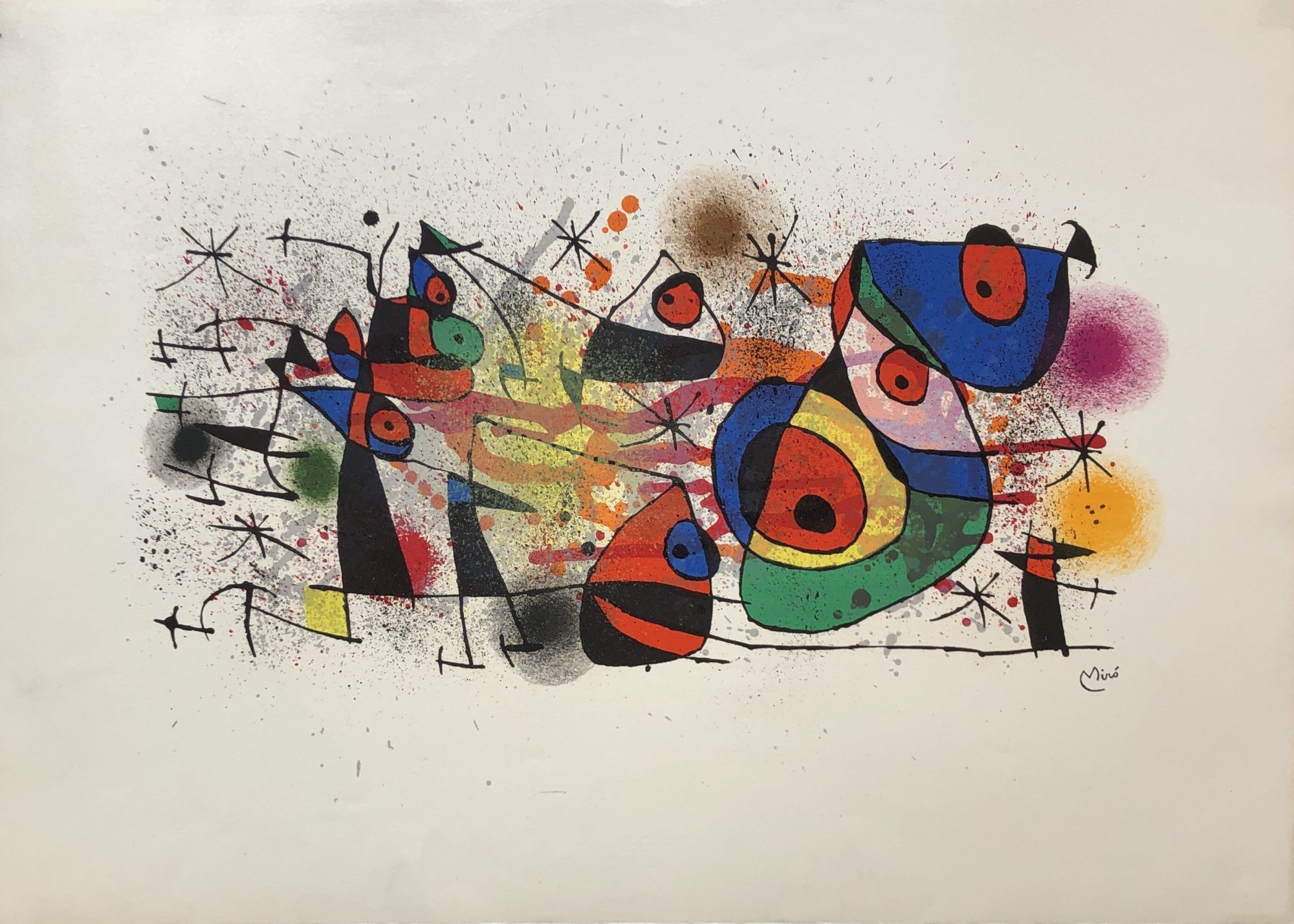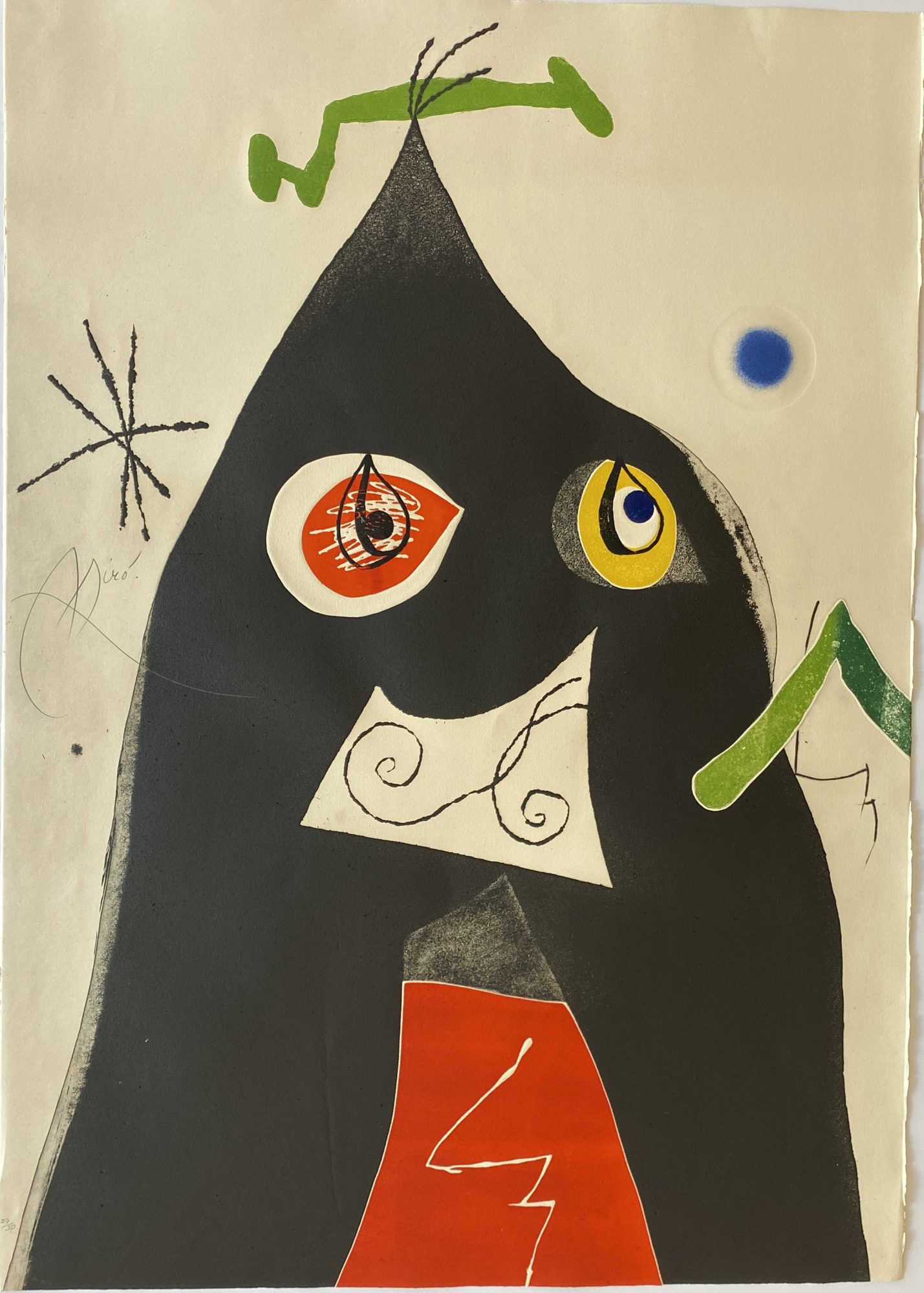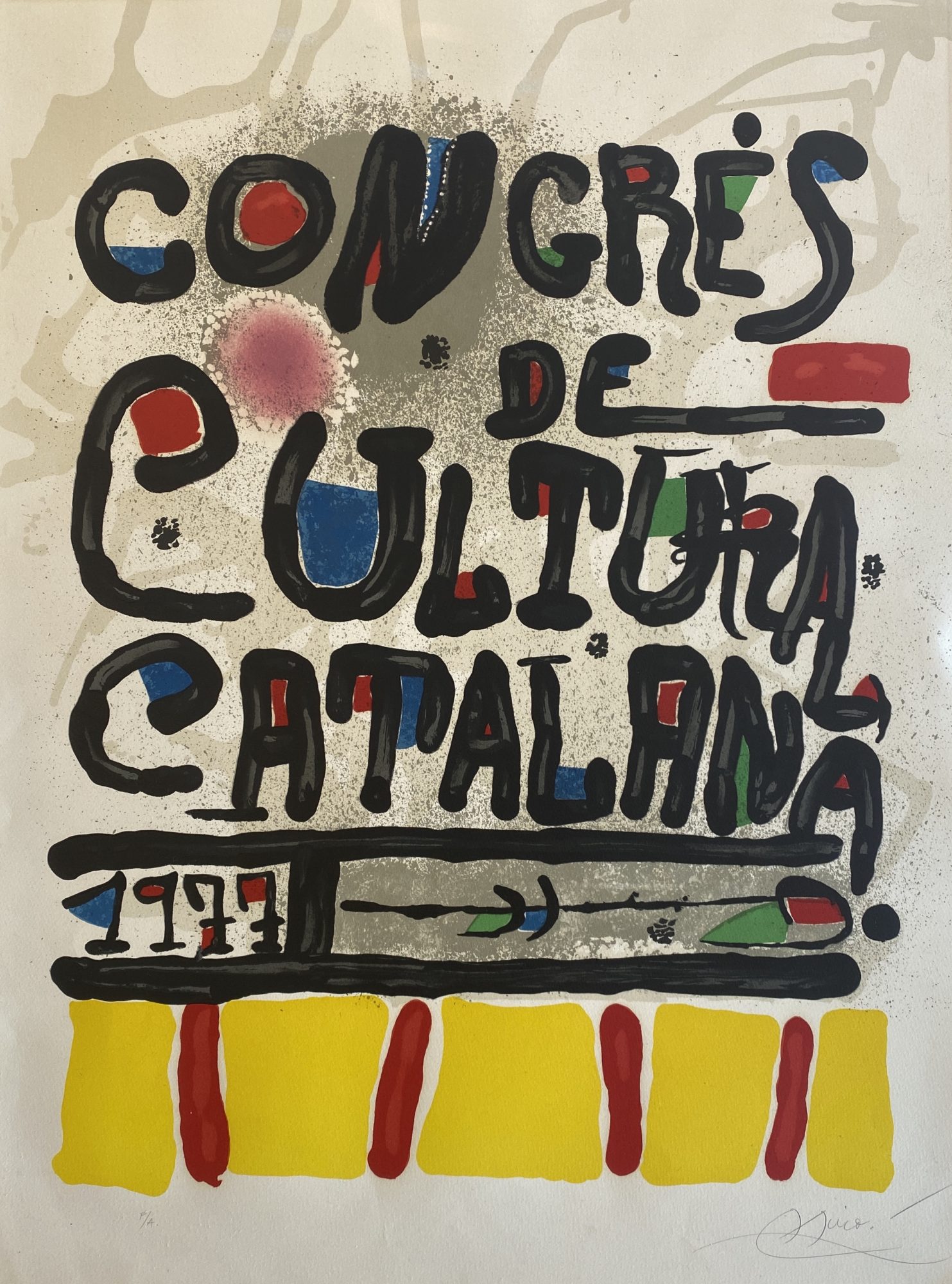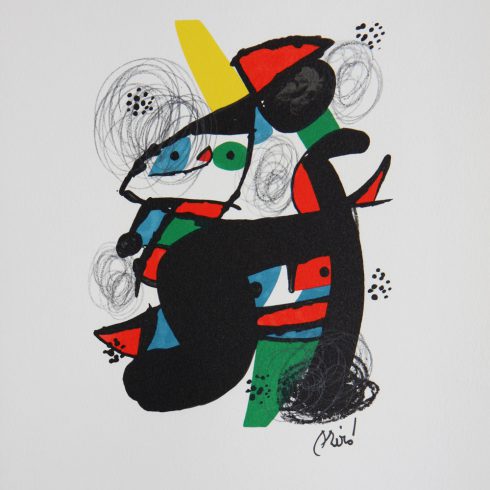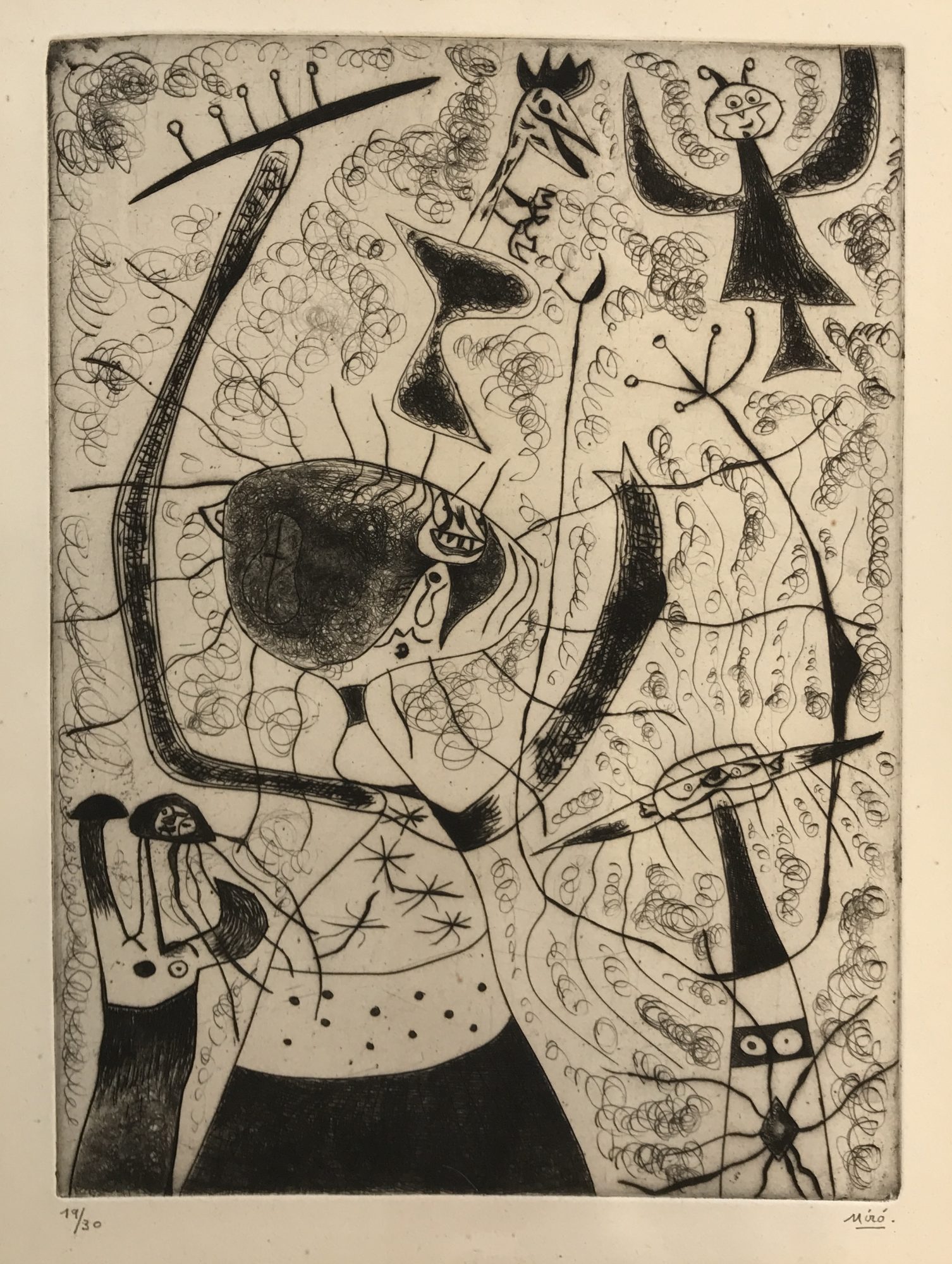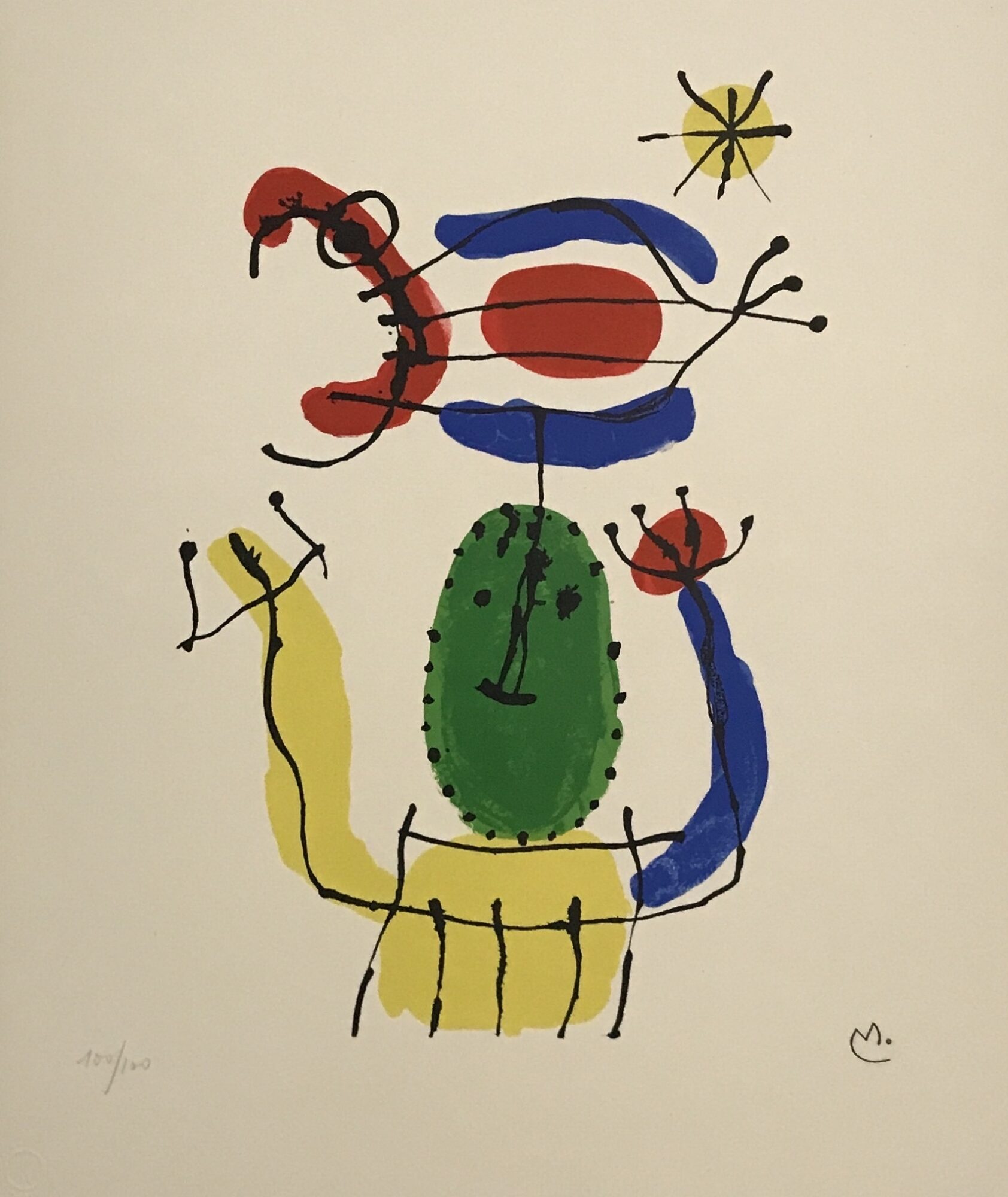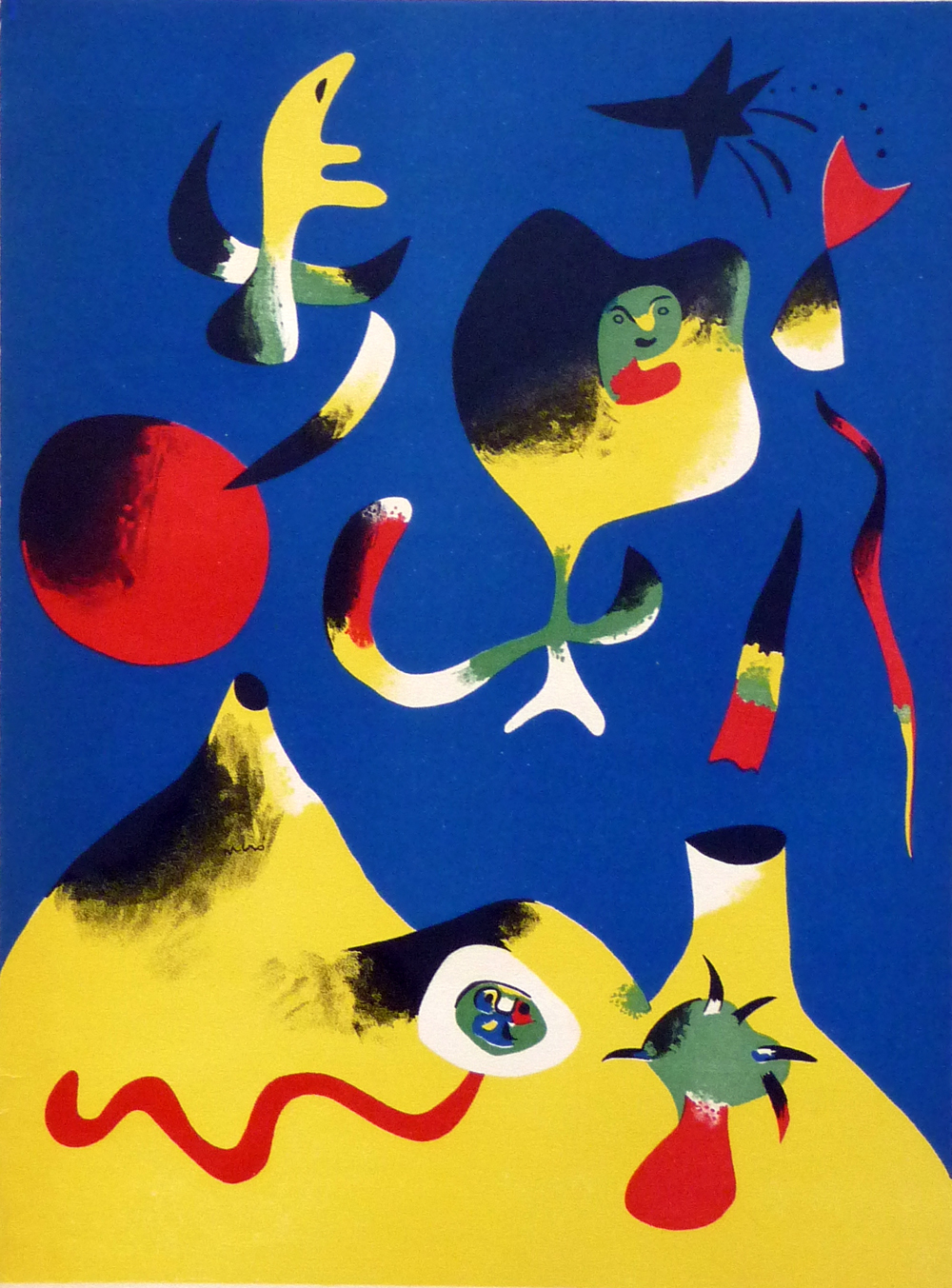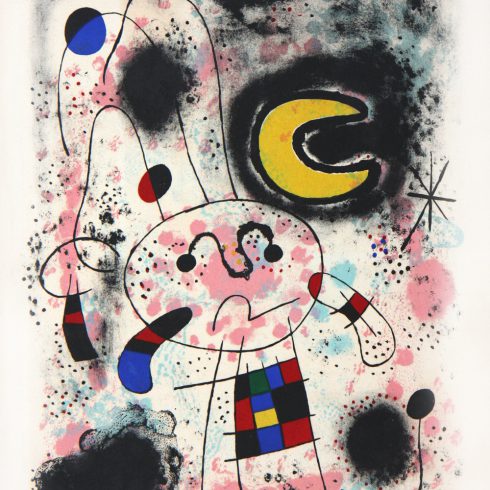Le Lettre – Rouge (M.548)
Le Lettre – Rouge, 1969 by Joan Miro is an original color lithograph on canvas, hand-signed in the lower right, and numbered lower left from the edition of 75. Maeght 548.
Joan Miró was a widely considered one of the leading Surrealists, although he was never officially part of the group. He pioneered a wandering linear style of Automatism — a method of “random” drawing that attempted to express the inner workings of the human psyche. Miró rejected the constraints of traditional paintings by creating works “conceived with fire in the soul but executed with clinical coolness,” as he once said. He used color and form in a symbolic rather than literal manner. His compositions combine abstract elements with recurring motifs such as birds, eyes, and the moon. “I try to apply colors like words that shape poems, like notes that shape music,” he said. Miró has inspired many artists, most significantly Arshile Gorky, whose bold linear abstractions proved a foundational influence on Abstract Expressionism.
| Title | Le Lettre – Rouge |
|---|---|
| Medium | Lithograph |
| Year | 1969 |
| Edition | 75 |
| Catalogue Raisonné | M. 548 |
| Signature | Signed, numbered |
| Size | 33.5 x 23.75 (in) 85 x 60 (cm) |
| Price | Price on Request |
Description
Le Lettre – Rouge, 1969 by Joan Miro is an original color lithograph on canvas, hand-signed in the lower right, and numbered lower left from the edition of 75. Maeght 548.
Joan Miró was a widely considered one of the leading Surrealists, although he was never officially part of the group. He pioneered a wandering linear style of Automatism — a method of “random” drawing that attempted to express the inner workings of the human psyche. Miró rejected the constraints of traditional paintings by creating works “conceived with fire in the soul but executed with clinical coolness,” as he once said. He used color and form in a symbolic rather than literal manner. His compositions combine abstract elements with recurring motifs such as birds, eyes, and the moon. “I try to apply colors like words that shape poems, like notes that shape music,” he said. Miró has inspired many artists, most significantly Arshile Gorky, whose bold linear abstractions proved a foundational influence on Abstract Expressionism.
When the French poet André Breton penned his Manifesto of Surrealism in 1924, cementing one of the most important movements of the 20th century, he claimed as his associates some of the leading avant-garde artists of the period: Marcel Duchamp, Francis Picabia, Man Ray,Henri Matisse, and Pablo Picasso, among others. But in retrospect, one name is glaringly omitted from Breton’s selection: the Catalan painter Joan Miró.
Just a year earlier, Miró, who was based between Paris and Spain, had begun work on The Tilled Field (1923) and The Hunter (Catalan Landscape) (1923–4), paintings whose fantastical, lyrical fields of uncanny references—swirling, abstract forms, floating body parts, and distorted animals—aligned closely with the concerns of the
Indeed, the works reflected Breton’s embrace of dream imagery and “psychic automatism”: a practice that sought to give creative license to the unconscious mind through unmediated drawing or painting. Miró would incorporate this method into his work for the rest of his career.
Additional information
| Title | Le Lettre – Rouge |
|---|---|
| Medium | Lithograph |
| Year | 1969 |
| Edition | 75 |
| Catalogue Raisonné | M. 548 |
| Signature | Signed, numbered |
| Size | 33.5 x 23.75 (in) 85 x 60 (cm) |
| Price | Price on Request |



